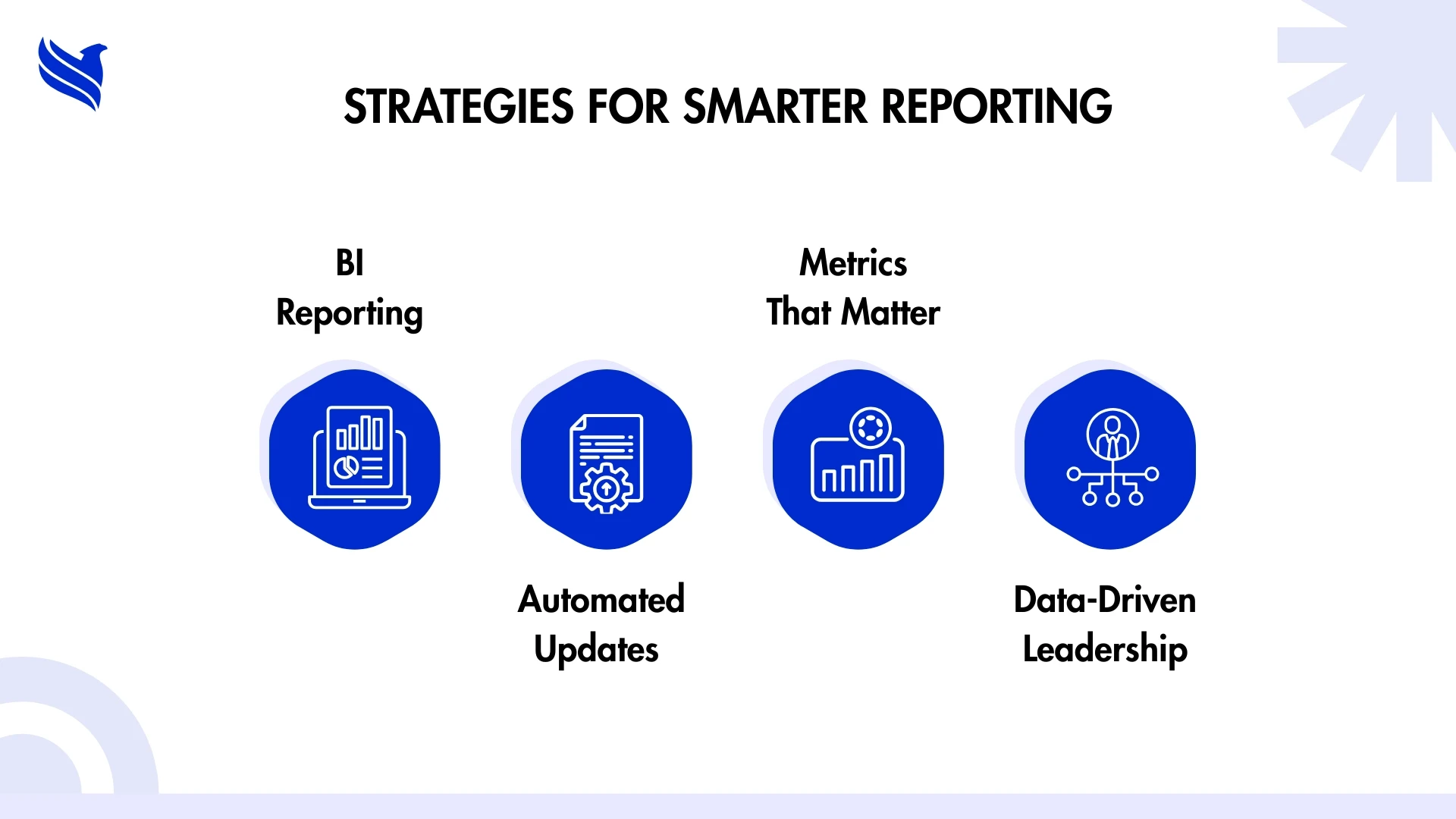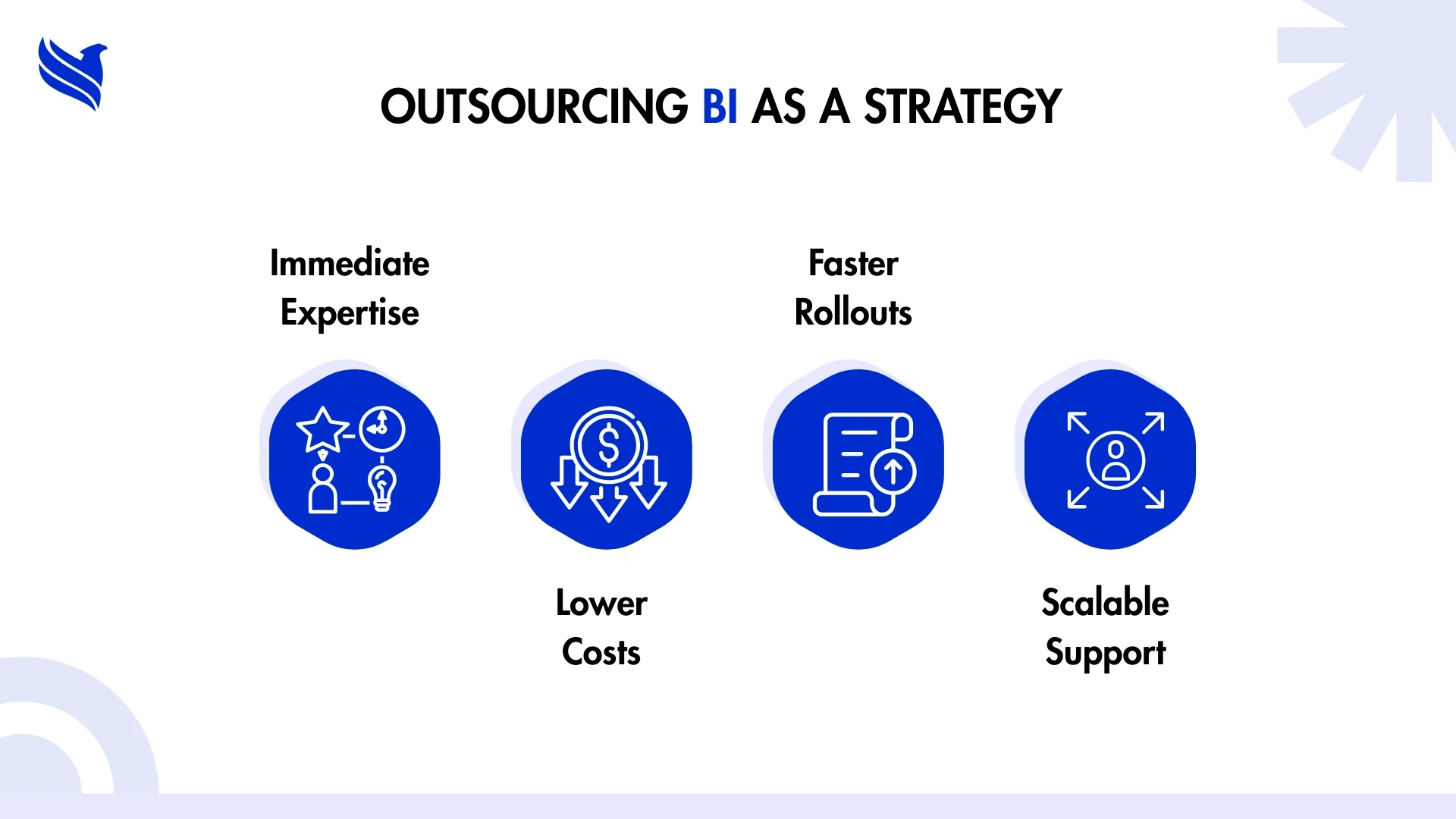Every business leader knows that time is the one resource that can’t be recovered. Yet, week after week, executives are losing over ten hours simply trying to piece together reports, double-check numbers, and hunt down the “real” version of the truth. The culprit? A lack of real-time reporting and modern BI reporting.
In companies where data lives in spreadsheets, email threads, and outdated dashboards, decision-making slows to a crawl. By the time a report is generated, the market has already moved on. Competitors who rely on BI reporting and modern business intelligence and reporting tools are already ahead, while leaders who depend on traditional methods remain trapped in constant catch-up mode.
This is not just an inconvenience, it’s a silent cost that eats into growth, profitability, and leadership focus. The solution lies in adopting smarter systems, and in many cases, leaning on Business Intelligence Services or even business intelligence outsourcing solutions to avoid turning reporting into a full-time job for the leadership team.
In this blog, we’ll unpack the hidden ways time is wasted without real-time insights, the challenges executives face, strategies to overcome them, and why outsourcing BI functions could be the smartest move leaders make this year.
The hidden cost of chasing data
Executives rarely think of reporting as the reason they’re exhausted, but it’s often the unseen drain on their schedules. Imagine a CMO who spends Monday mornings waiting on campaign performance numbers. By Wednesday, the finance lead finally shares a consolidated version, only for Friday to reveal that sales was working off a completely different set of figures. This cycle repeats every week, costing hours in clarifications, reconciliations, and heated debates over which number is “right.”
This isn’t inefficiency by accident, it’s the predictable outcome of running a company without real-time business intelligence and reporting. When numbers aren’t instantly available, leaders waste hours chasing clarity instead of driving strategy. Multiply that across finance, marketing, operations, and sales, and the collective time lost is staggering.
But worse than the lost hours is the missed opportunity. Decisions that could have been acted on in minutes are delayed for days. Markets don’t wait, and neither do competitors who already use BI reporting tools.
Also Read: What industries benefit from business intelligence
Reporting roadblocks that drain leadership focus
Fragmented Data Systems
Many leaders operate in environments where data lives in silos, finance on one tool, sales on another, marketing on ten different platforms. Without unified business intelligence reporting systems, every meeting begins with someone scrambling to align numbers.
Manual Compilation
Executives depend on managers who spend hours exporting data, cleaning it up, and pasting it into slides. By the time those reports land on the desk, they’re already outdated.
Inconsistent Metrics
Ask five departments for revenue figures and you’ll get five different answers. The absence of a single source of truth through BI reporting erodes confidence in reporting.
Delayed Insights
In industries where agility determines survival, getting a report two weeks late is the same as not getting it at all. A market trend spotted on day one can be monetized; spotted on day fifteen, it’s a missed chance.
Leadership Burnout
Beyond numbers, the constant back-and-forth creates mental fatigue. Leaders want to focus on strategy, not waste hours reconciling spreadsheets.
Smarter moves: Strategies for data-ready leadership

Business leaders who refuse to let reporting dictate their time are turning toward structured strategies:
Establish a Single Source of Truth
Centralizing data into a BI system eliminates duplication and guesswork. BI reporting ensures that everyone, from analyst to CEO, looks at the same version of reality.
Move from Static to Real-Time Dashboards
Automate the Mundane
Automation in business intelligence services reduces the grunt work of data cleaning and compilation. Instead of people preparing reports, people can interpret them.
Build Metrics That Matter
Executives don’t need to see every number—they need the right numbers. Setting clear KPIs ensures reporting drives action instead of confusion.
Invest in Training
Technology without adoption is just software gathering dust. Leaders who want value from business intelligence and reporting tools must ensure teams are trained to use it.
Static reports show you what happened last week. Real-time dashboards show you what’s happening right now. That’s the difference between reacting and leading.
The culture of decision latency
It’s not just about tools, it’s about culture. Many organizations normalize decision delays. Leaders wait for reports before acting, even when gut instinct and partial data could speed things up. This culture of latency is a silent killer of growth.
When decisions are perpetually “pending more data,” opportunities slip away. Competitors who act faster, sometimes with imperfect information but strong BI frameworks, gain the upper hand.
Interestingly, research shows that leaders with real time reporting capabilities make faster and more confident decisions, often outpacing rivals not because they had more data, but because they had timely data.
The irony is stark: executives are drowning in information, but starving for insight. Without shifting the culture toward real-time intelligence, tools alone won’t fix the delay.
From numbers to narratives: the story leaders really need
Executives don’t want 200-page reports, they want clarity. They want to know whether sales are trending up or down, which campaigns are worth doubling down on, and where financial risks are hiding. Numbers without context create paralysis.
That’s why modern business intelligence services focus on turning raw data into actionable stories. A CMO doesn’t just see click-through rates; they see whether campaigns are generating profit. A CFO doesn’t just see expenses; they see how costs align with growth.
Take marketing, for instance. Campaign tracking used to mean waiting weeks for reports from multiple platforms. Today, BI tools can connect the dots instantly. As covered in our piece on how BI helps track campaign ROI in real-time, this level of visibility transforms marketing from a guessing game into a revenue-driving machine.
Leaders don’t need more data, they need the right data, delivered in the right story, at the right time.
Why outsourcing BI isn’t just a shortcut; it’s a strategy

Every company hits the same wall at some point. The leadership team agrees they need better reporting, someone suggests building an in-house BI function, and on the surface it sounds ideal, own the data, control the process, keep it internal. But then reality sets in.
Finding the right BI talent takes months, and even when you do, the salaries are steep. By the time a few hires are made, they’re still trying to align tools, clean up data feeds, and debate which dashboards to prioritize. Meanwhile, the reporting delays haven’t gone anywhere. Leaders are still chasing numbers around in spreadsheets while waiting for the “perfect” in-house system to materialize.
That’s why more and more companies are shifting to business intelligence outsourcing solutions. Not as a shortcut, but as a faster, smarter way to get clarity without headaches. With an external partner, you’re not starting from scratch, you’re stepping into the middle of a play that’s already in motion. These teams have done it before. They know how to connect messy systems, they know which tools actually work, and they can deliver insights in days rather than months.
And the upside isn’t just speed. Outsourcing avoids the overhead of building a full department. It removes the endless internal debates over platforms. It lets leaders focus on interpreting insights instead of managing another team. Most importantly, it gives businesses room to grow, because the support can scale up or down without painful hiring cycles.
For executives who’ve grown tired of waiting on reports that arrive too late to matter, outsourcing BI isn’t about trimming costs. It’s about buying back time and making sure leadership decisions are grounded in facts, not guesswork.
Conclusion: Reclaiming leadership time with smart BI
Think about it, those ten hours a week spent chasing down numbers aren’t just lost minutes on the clock. They’re missed conversations with your team, delayed moves in the market, and opportunities that never even made it to the table. Without real time reporting and BI reporting, leaders end up reacting to yesterday’s problems instead of steering tomorrow’s growth.
The real shift isn’t complicated, when BI reporting is done right, reports stop being a burden and start guiding decisions in real time. And with business intelligence outsourcing solutions, leaders don’t face added stress or bloated costs; instead, they gain the clarity they need to act faster and with more confidence
At FBSPL, we’ve seen firsthand how companies move from reporting chaos to confidence. Our Business Intelligence Services are built to give you back those hours, so you can spend less time reconciling spreadsheets and more time leading.
Because every hour spent untangling reports is an hour your competitors are already using to get ahead. Why give them the advantage?
Partner with FBSPL and start making decisions when they matter most.





